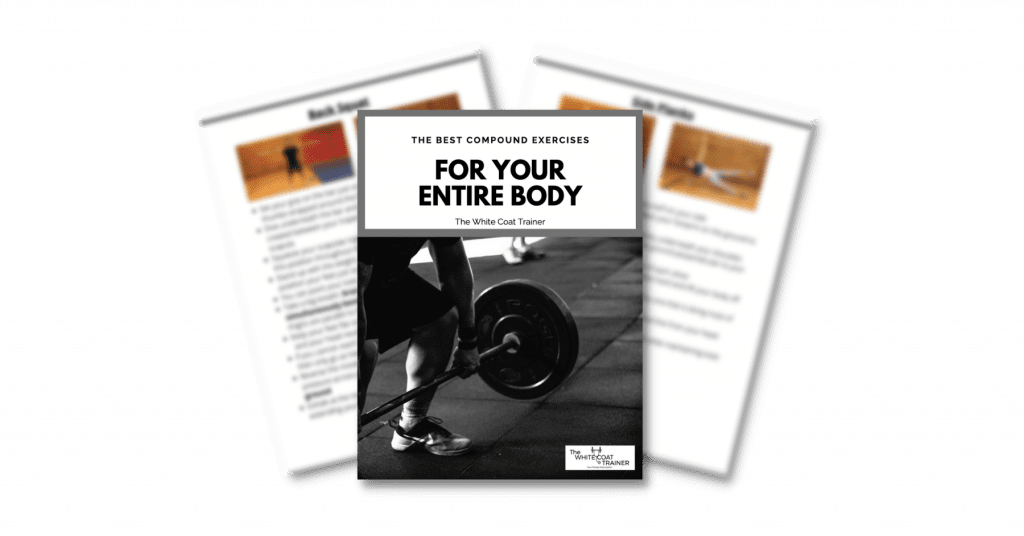Are you looking to lose fat without losing muscle?
You’re in the right place.
In this post, you’re going to learn the 3 scientifically proven ways to burn fat while minimizing muscle loss.
Specifically, you’ll learn:
- Why simply ‘losing weight’ is the wrong approach
- What foods you should eat to lose fat and keep muscle
- What type of exercise you should do to maximize muscle retention
Let’s get started.
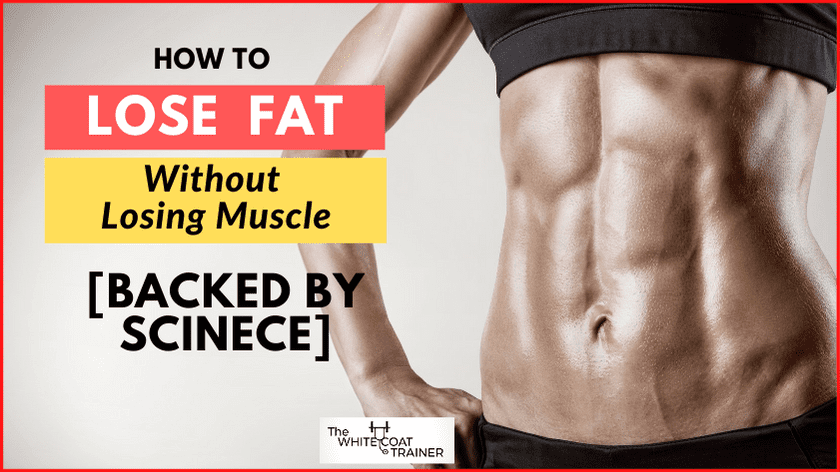
How Can I Lose Fat and Keep Muscle At The Same Time?
Losing fat without losing muscle requires three things.
- A slight caloric deficit
- A high protein intake
- Strength training
All three of these factors are equally important, and you cannot skip any of them.
We’ll go over each one step-by-step.
Step #1: Create a Slight Caloric Deficit
The first thing that you need to do to lose fat is to eat at a slight caloric deficit.
This means that you must consume fewer calories than your body burns. This forces your body to seek other sources of energy like fat.
The problem is, your body doesn’t just pull energy from fat. It can also pull energy from your muscles. That is why you don’t want to create a large calorie deficit.
Instead, start by decreasing your portion sizes by 10%.
You can eyeball it, and it doesn’t have to be perfect.
The important thing is that you make a conscious effort to make each portion size a bit smaller.
Now let’s go over why you shouldn’t overdo this.
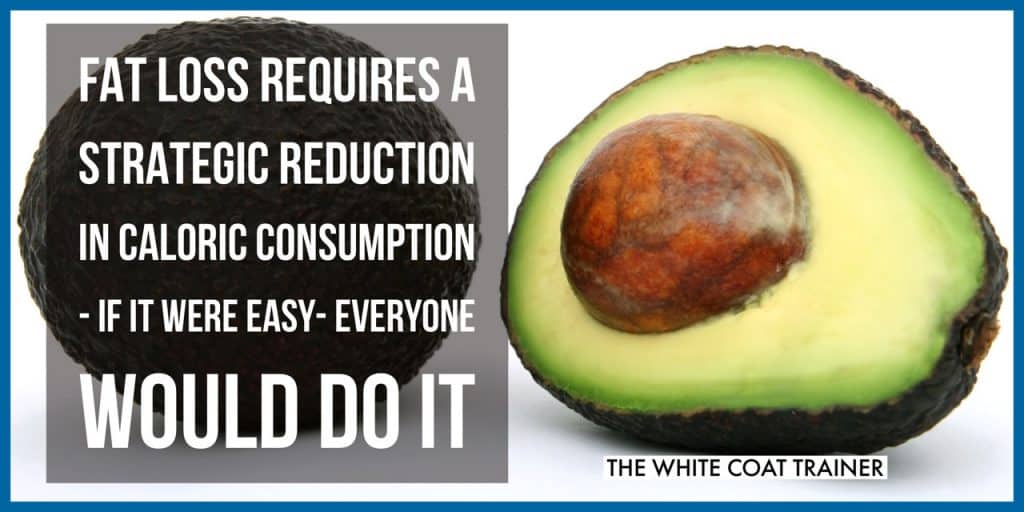
You Must Avoid Large Caloric Deficits
So why can’t you just eat at a large caloric deficit?
The answer is metabolic adaptation.
Metabolic adaptation refers to how your body processes or “spends” the energy you consume.
If your body suddenly stops receiving the normal amount of calories it is used to receiving, it can’t continue operating at the same level of efficiency.
Your body has no choice but to begin conserving that precious energy.
It does this by slowing down its metabolism and using less energy to do its normal tasks.
This is normal.
Metabolic adaptation is inevitable when losing fat.
The good news is, you can minimize large changes to your metabolism if you lose fat in a controlled manner. AKA – by eating at a slight deficit each day.
- Don’t follow a crash diet.
- Don’t eliminate entire food groups from your diet.
- Don’t do intermittent fasting if you can’t eat a sufficient number of calories during the feast
- etc
Most importantly, don’t worry about being perfect. 90% will be more than enough.
Step #2: Keep Your Protein Intake High
Protein is the most important macro-nutrient when it comes to muscle retention and fat loss.
Why?
Because protein has several properties that make it ideal for this situation.
First of all, protein is one of the most satiating nutrients. After fiber, protein is the nutrient that keeps you the most satisfied, or full.
Secondly, protein helps boost your metabolism.
Of the three macronutrients- your body has to work the hardest to digest protein.
Up to 10% of your total daily energy expenditure is spent absorbing the nutrients from the calories you consume!
So eating more protein helps boost this number up a bit.
Last but not least, protein intake is associated with the preservation of muscle mass.
This is important to understand because fat loss and weight loss are two different things.
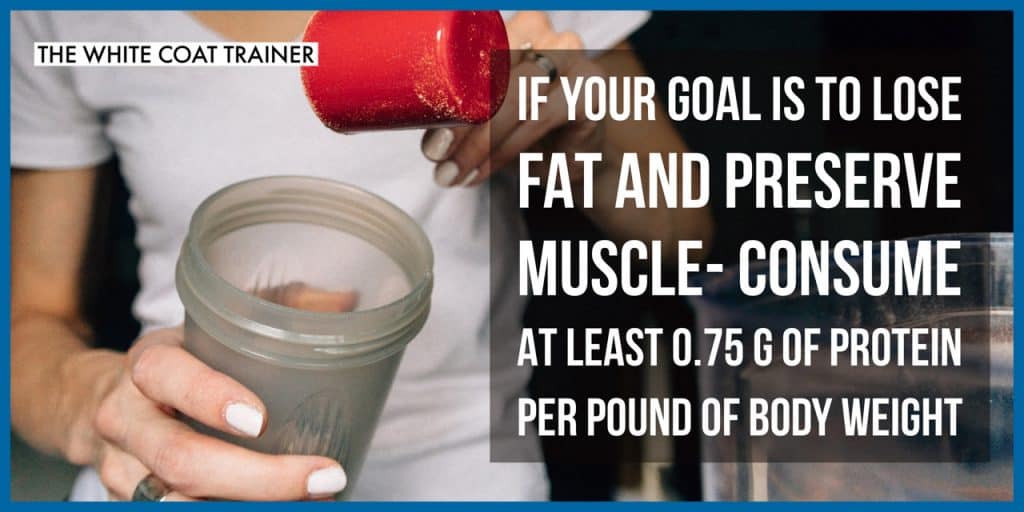
Avoid Weight Loss, Your Goal Should Be Fat Loss
It is important to note that your goal is NOT to lose weight- it’s to lose fat.
They do have some overlap, but weight loss and fat loss are not the same thing.
When your body has to pull energy from stored resources, it doesn’t always pull energy from fat. It can pull energy from muscle tissue too.
Loss of muscle mass is the exact process that we are trying to avoid.
During times of food shortages (aka a caloric deficit), your body doesn’t see muscle as a necessary thing to hold on to.
It sees muscle as an expensive commodity that it could burn for energy. That is why you want to signal to our body that you value muscle tissue, and you want to keep muscle tissue.
Thankfully, there are two things that you can do to signal to your body to hold on to precious muscle tissue.
The first is keeping your protein intake high.
Here are the best sources of lean protein.
| Best Sources of Protein |
|---|
| Lean chicken breast |
| Salmon |
| Lean beef |
| Greek yogurt |
| Legumes (chickpeas, lentils, black beans) |
| Tofu |
| Edamame |
| Seeds (hemp seeds) |
| Quinoa |
| Protein powder supplements |
Want to know the best sources of carbohydrates and fats too?
Next, let’s talk about the second thing you need to do to preserve muscle tissue.
Step #3: Strength Train With Compound Exercises
Resistance training is the only known way to stimulate muscle protein synthesis.
And not just any type of exercise.
It’s important to strength train with exercises that are proven to build the most amount of muscle.
What exercises are these?
Compound exercises that use a large range of motion.
The Best Exercises For Strength & Hypertrophy
Building muscle requires a strong exercise stimulus, a recovery period, and an adaptation period.
The key here is a strong exercise stimulus.
You need to focus on exercises that allow large muscle groups to go through their full range of motion.
These exercises typically include:
- An upper body push exercise
- An upper body pull exercise
- A knee flexion exercise
- A hip extension exercise
The Upper Body Push
The upper body push involves exercises that target the shoulders, chest, and tricep muscles.
They can be broken down into horizontal and vertical pushing exercises such as bench pressing, and overhead shoulder pressing respectively.
These types of exercises have large ranges of motion and will force your body to stimulate and preserve muscle tissue on the anterior side of your upper body.
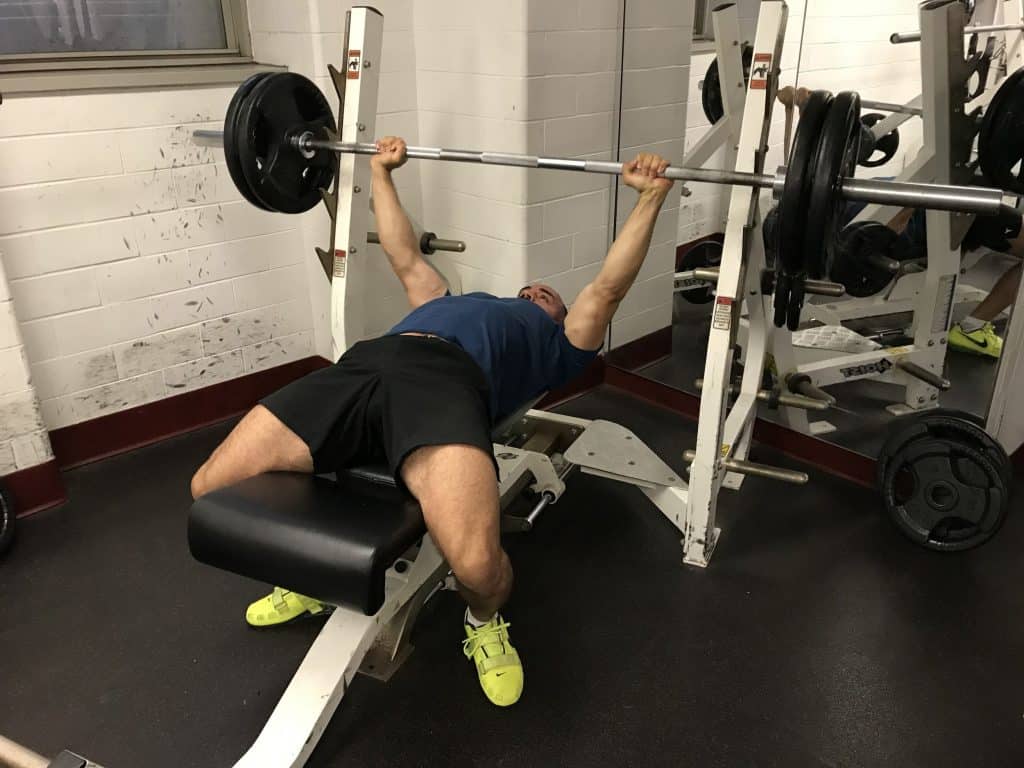
The Upper Body Pull
The upper body pull is the opposite.
These involve exercises that strengthen the trapezius muscles, latissimus dorsi muscles, rhomboid muscles, and the biceps.
Similar to the pushing exercises these can be divided into horizontal and vertical pulls.
Common examples include barbell rows, and pull-ups respectively.
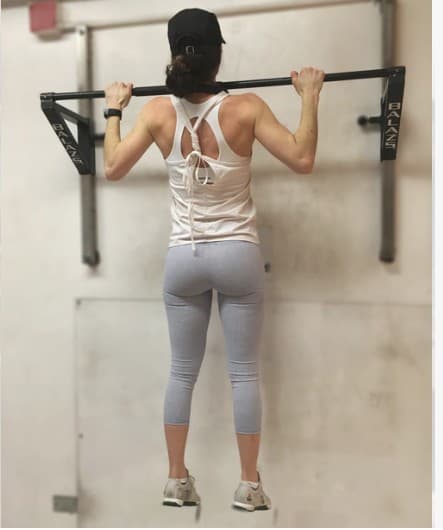
The Knee Flexion
Knee flexion exercises strengthen the muscles on the anterior side of your lower body.
This includes the large quadricep muscles as well as the adductor muscles on the inside of your thighs.
Common examples include squats, lunges, and step ups.
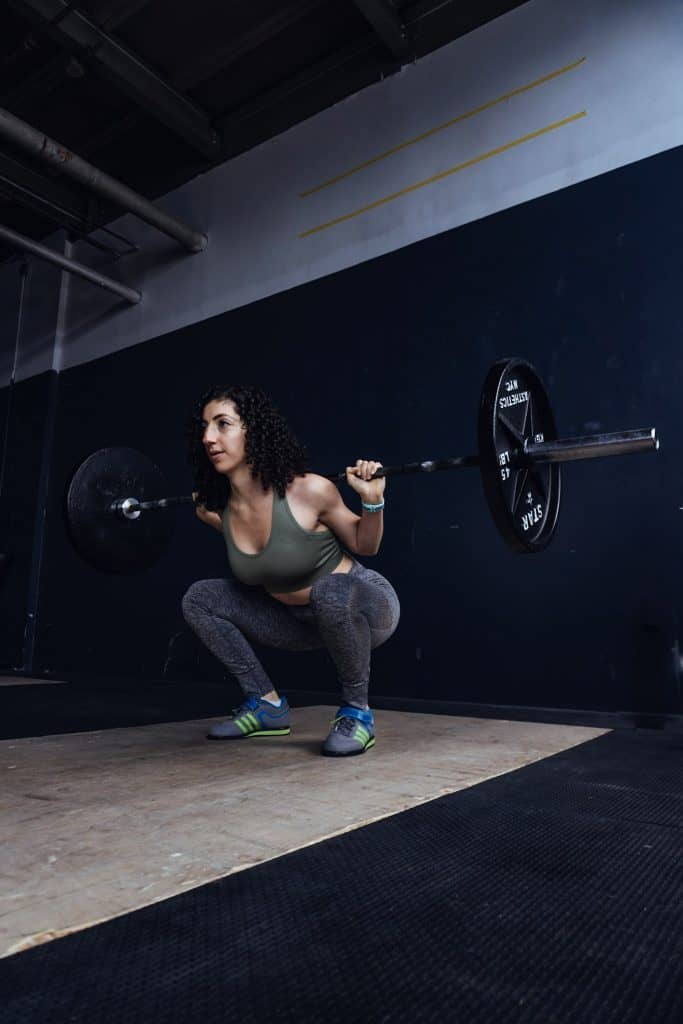
The Hip Extension
The last category of exercises is the hip extension a.k.a. the hip hinge.
These exercises involve the posterior side of your lower body; namely the glutes, hamstrings, and lower back.
Common examples include deadlifts, and bridge exercises.
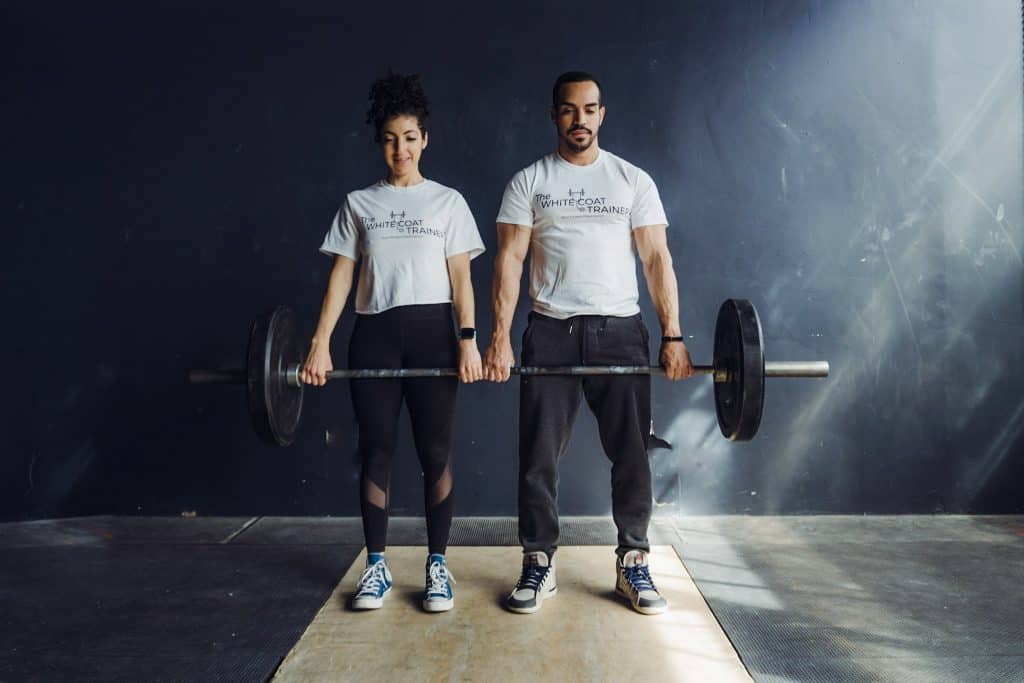
If you’d like a list of all the best muscle-building exercises, check out our complete list of compound exercises.
As you can see, all of these weight training exercises have one thing in common.
They require a large range of motion, and they stimulate multiple muscle groups at once.
By including exercises from each of these different categories, you will be providing your body a signal that it needs to preserve muscle mass.
If you want all of the best exercises for each muscle group in one place, check out our E-book which goes over all the best compound exercises for your entire body!
Avoid Excessive Exercise
The final thing that you want to avoid is creating a routine that you won’t be able to follow.
Don’t create a 2 hour workout routine that you won’t be able to sustain. The intensity of your routine and/or training volume should be reduced. Especially since you are purposefully decreasing your caloric intake.
Only do enough to stimulate all of your muscles, not annihilate them.
This is why I only strength train for 30 minutes a day.
This forces me to pick my exercises wisely, allows me to get in and out of the gym, and is sustainable for my lifestyle.
Check out how I set my 30 minute workout here.
A Few Other Tips To Help You Keep Muscle Tissue During Fat Loss
Now let’s go over a few other things you should do to maximize your results.
Focus on Recovery
Recovery is one of the most important aspects of fitness. Without it, you will never give your body what it needs to process energy efficiently.
For starters, it’s important that you
- hydrate appropriately with enough water,
- eat enough protein, and
- get a sufficient amount of sleep.
How much protein, water, and sleep?
- Drink 0.5 ounces of water per pound of bodyweight, per day.
- Consume ~ 0.75 grams of protein per pound of body weight, per day.
- Get at least 7 hours of sleep per night.
We go over other ways to boost recovery here.
Center The Majority Of Your Carbs Around Your Workout
Carbohydrates don’t make you fat.
Eating an excessive number of calories coupled with bad genetics and a lack of physical activity leads to weight gain.
With that said, carbohydrates can easily be eaten in excess.
Do your best to consume carbs close to your workout window (especially post-workout).
Post-workout consumption of carbohydrates don’t get stored as fat. Instead, they are immediately used to help replenish glycogen stores in muscle and liver.
Avoid Excessive cardio
Lastly, if you don’t enjoy cardio, then don’t do it. It actually isn’t that great at helping you lose fat.
If your goal is to lose fat and maintain muscle, then cardio will do very little to help you maintain muscle mass.
Excessive cardio can actually be counterproductive in maintaining lean muscle tissue.
Instead, you should focus more effort in strength training with moderately heavy weights.
I go over this in more detail in Why I Don’t Do Cardio.
Other Related Questions
How much fat can you lose in a week without losing muscle?
On average, you can lose about 1-2 pounds of fat per week without losing muscle. The heavier you are, the more weight you can lose.
With that said, don’t solely rely on the scale for your progress. Use other objective measures such as progress pictures and strength gains.
I go over how long it takes to lose fat and build muscle in more detail here.
When does your body burn muscle instead of fat?
Your body will burn muscle instead of fat if you already have a decent amount of muscle tissue, and you decrease your calorie intake without exercising regularly.
A lack of resistance training will signal to your body that it doesn’t need to hold on to excessive muscle tissue. Muscle is more expensive to maintain, therefore, your body will get rid of it in times of energy shortages.
Do you always lose muscle when losing weight?
In general, you will always lose some degree of muscle when losing weight. The best way to minimize muscle loss is to signal to your body that you need muscle tissue by regularly strength training and keeping your protein intake high.
Are there any signs you are losing muscle?
If you are losing more than 1-2 lbs per week, you are likely losing muscle. Other signs include significant decreases in your strength, your workouts feel more challenging as time goes on, or you don’t notice any progress whatsoever.
The best way to tell if you are losing fat versus losing muscle is through progress photos. Take pictures from the front, side, and back every 2 weeks.
With that said, it is impossible to determine if weight loss is entirely fat versus mostly fat and some muscle.
If you want exact numbers, you can get a DEXA scan to know your true body composition.
Can I lose stomach fat but not muscle?
Unfortunately, you cannot spot reduce fat just from your abdomen. To lose fat anywhere in your body while maintaining your muscle, you will have to create a small caloric deficit, keep your protein intake high, and regularly strength train.
Your body will lose fat from wherever it decides to lose it from.
Can you lose body fat without cardio?
Yes, you can lose body fat without cardio because the most important factor in helping you lose fat is your diet.
Cardio can help you burn additional calories, but it is not necessary. You are much better off spending your time increasing or maintaining lean muscle mass which can only be done through resistance training.
Too much cardio can also be counterproductive for muscle maintenance.
Final Words On How To Maintain Muscle While Losing Fat
So there you have it.
Losing fat without losing muscle primarily requires three things
- A slight hypocaloric diet
- Adequate protein intake
- Strategic resistance / weight training
Similarly, you should avoid
- Rapid weight loss
- A very low-calorie diet
- An unsustainable or excessive exercise program
Are you ready to undergo body recomposition?
Comment below and let us know!
Related Posts On Maintaining Lean Body Mass
- How To Build Muscle Naturally (3 Simple Steps)
- 10 Science-Based Ways To Lose Fat Without Starving
- Is Cardio Actually Necessary [5 Reasons Why I Don’t Do Cardio]

Alex Robles, MD, CPT / Brittany Robles, MD, MPH, CPT
Alex & Brittany Robles are physicians, NASM Certified Personal Trainers, and founders of The White Coat Trainer: a resource dedicated to improving the health and fitness of busy professionals using time-efficient strategies. Their advice has been featured in My Fitness Pal, Prevention, Livestrong, Reader’s Digest, Bustle, The Active Times, and more. Learn more about them here.
References
- Cava E, Yeat NC, Mittendorfer B. Preserving Healthy Muscle during Weight Loss. Adv Nutr. 2017;8(3):511-519. Published 2017 May 15. doi:10.3945/an.116.014506
- Weigle DS, Breen PA, Matthys CC, Callahan HS, Meeuws KE, Burden VR, Purnell JQ. A high-protein diet induces sustained reductions in appetite, ad libitum caloric intake, and body weight despite compensatory changes in diurnal plasma leptin and ghrelin concentrations. Am J Clin Nutr. 2005 Jul;82(1):41-8. doi: 10.1093/ajcn.82.1.41. PMID: 16002798.
- Johnston CS, Day CS, Swan PD. Postprandial thermogenesis is increased 100% on a high-protein, low-fat diet versus a high-carbohydrate, low-fat diet in healthy, young women. J Am Coll Nutr. 2002 Feb;21(1):55-61. doi: 10.1080/07315724.2002.10719194. PMID: 11838888.
- Deibert, P., et al. “Weight loss without losing muscle mass in pre-obese and obese subjects induced by a high-soy-protein diet.” International journal of obesity 28.10 (2004): 1349-1352.
- Cava, Edda, Nai Chien Yeat, and Bettina Mittendorfer. “Preserving healthy muscle during weight loss.” Advances in nutrition 8.3 (2017): 511-519.
- Demling, Robert H., and Leslie DeSanti. “Effect of a hypocaloric diet, increased protein intake and resistance training on lean mass gains and fat mass loss in overweight police officers.” Annals of Nutrition and Metabolism 44.1 (2000): 21-29.

